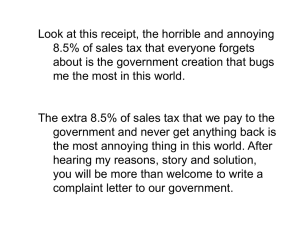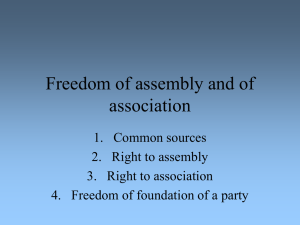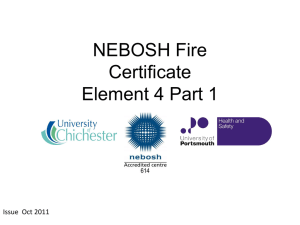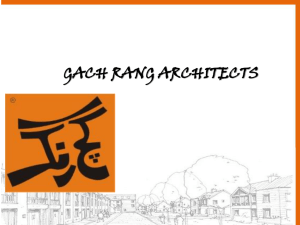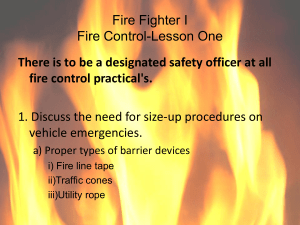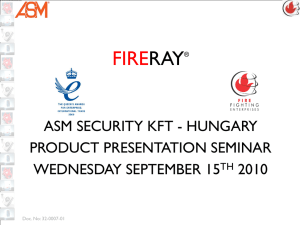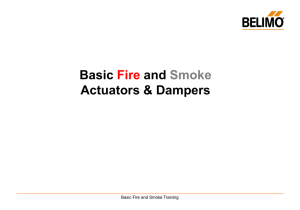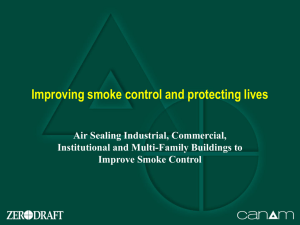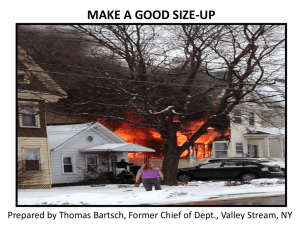Class 7 Power Points
advertisement
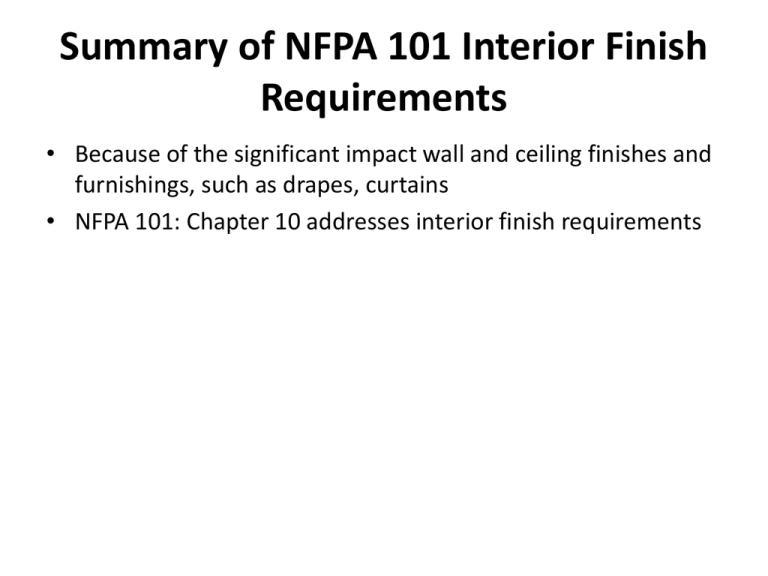
Summary of NFPA 101 Interior Finish Requirements • Because of the significant impact wall and ceiling finishes and furnishings, such as drapes, curtains • NFPA 101: Chapter 10 addresses interior finish requirements Interior Finish Classes – Interior finishes are broken down into three classifications: • Class A Interior Wall and Ceiling Finish (flame spread 025, smoke development 0-450) • Class B Interior Wall and Ceiling Finish (flame spread 26-75, smoke development 0-450) • Class C Interior Wall and Ceiling Finish (flame spread 76-200, smoke development 0-450) • Where the standards require C, A or B can also be used • Where the standards require B, A can also be used Interior Finishes • Interior Wall and Ceiling Finish • Interior wall and ceiling finish materials – Less than 1/28” not considered interior finish if they meet Class A testing requirements –Fixed or moveable walls and partitions, paneling, wall pads, acoustical materials, insulation, etc. are considered interior finishes. – Floor finishes Floor Finish Classes • Interior floor finishes are characterized by their critical radiant flux ratings – Critical Radiant Flux is the level of radiant heat energy on the floor covering system at the most distant flame out point – It provides a basis for estimating one aspect of flame-spread behavior for floor covering systems • Class I: critical radiant flux of not less than .45 W/cm2 • Class II: critical radiant flux of not less than .22 W/cm2 but less than .45 W/cm2 Standards for Specific Materials • Textile Wall and textile ceiling material • Expanded vinyl wall and expanded vinyl ceiling materials • Cellular or Foamed Plastic • Metal ceiling panels Contents and Furnishings • Upholstered furniture – Resistant to cigarette ignition – Char length standards (1 ½”) • Mattresses – Char length standards (2”) – Heat release Industrial Occupancy – Interior Finishes in industrial occupancies can be Class A, B, or C – In exit enclosures, interior finishes shall be Class A or Class B – Floor finishes in exit enclosures including stair treads and risers shall be not less than Class II. Protecting Openings • Depending upon the purpose walls will have different fire rating requirements • Load bearing, non-load bearing, interior, exterior, exit corridor, etc. • Doors used in these openings must meet applicable fire ratings Determining Fire Ratings of Doors • To determine the appropriate fire rating for a door you need to know the following: – The purpose the wall/partition is serving • Fire barrier • Exit access corridor • Horizontal exit – Fire rating of the component Smoke Management • Smoke Management – Smoke management systems are designed to modify, dilute, redirect, or otherwise influence the movement of smoke in a building experiencing a fire, but not necessarily to control it or limit its movement. Smoke Control – Smoke control systems limit and control the movement of smoke during a fire – The most common approach involves pressurizing the areas on either side of the compartment where the fire is located and exhausting the fire area. – This is referred to as dynamic smoke control. – This method creates a pressure sandwich which tends to move air (and thus smoke) from the protected areas towards the fire and move smoke out of the fire area. – While this does introduce fresh oxygen to the fire area, most systems are aimed at protecting the occupants and equipment in the adjacent compartments to allow evacuation and to allow firemen to gain clear access to the fire to extinguish it Dynamic Smoke Control • Instead of shutting down the ventilation fans when smoke is detected, dynamic smoke management systems often require the fans to continue to run. • Strategically located dampers open or close to channel HVAC air into selected areas, creating high and low pressures as required. • Areas favored for pressurization are stair towers. lobbies, hallways, and, in some instances, elevator shafts. Static Smoke Control • Conventional shutdown systems seek to contain smoke by limiting air movement. • Once smoke is detected, ventilating fans shut down, and low leakage dampers throughout the system close to inhibit smoke passage. Smoke Curtains and Fire Curtains • Smoke curtains prevent the movement of smoke and heat from one area to another in a fire by channeling or containing the smoke and heat. • Fire curtains are vertical fire barriers that separate and protect escape routes. • Automatic curtains are comprised of fire resistant fabric fixed to a steel roller which is driven by an internal electric motor.
